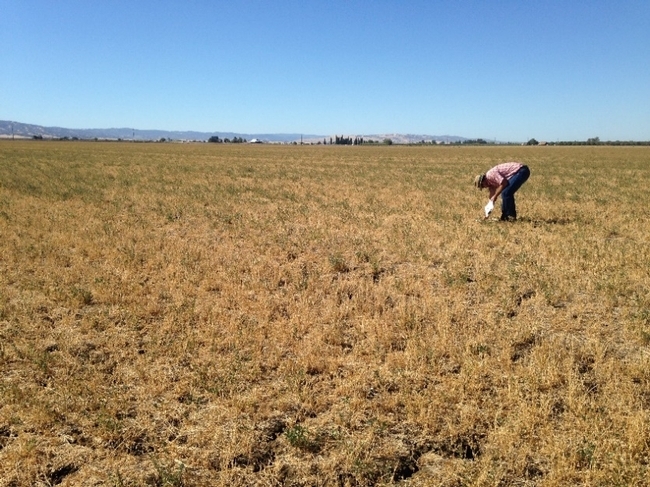
To help farmers make the best use of the water they have available, a series of new and updated drought tips fact sheets has been developed by UC ANR scientists and funded by the California Department of Water Resources.
“These drought tips provide irrigation management recommendations for a broad range of agricultural crops and under different water supply conditions,” said Daniele Zaccaria, UC ANR Cooperative Extension agricultural water management specialist at UC Davis and major organizer of the drought tip series. “The information in these tips will be of practical use for growers and other water-related stakeholders now and into the future as our agricultural community continues to adapt to climate variability and to a changing water supply situation.”
UC ANR scientists have identified best management practices for a wide range of annual and permanent crops and irrigation systems and methods during the drought. In the drought tips series, they also give advice for managing soil salinity and using shallow groundwater for irrigating crops. For beef cattle, they provide recommendations for culling herds and feeding to supplement grazing.
The following drought tips are currently available for free download at http://ucanr.edu/drought-tips:
- Drought strategies for alfalfa
- Drought management for California almonds
- Use of shallow groundwater for crop production
- Drought strategies for walnuts
- Fog contribution to crop water use
- Reclaiming Saline, Sodic and Saline-Sodic Soils

Decades of UC ANR research underlie the information contained in the drought tips. In the 1970s and again in the 1990s, UC ANR partnered with DWR to develop a series of drought management fact sheets.
“DWR has worked with UC ANR to update the drought tips and make sure the latest and best information on water management is available to growers,” said Peter Brostrom, DWR Water Use Efficiency Section Manager.
The California Institute for Water Resources, which coordinates water-related research and extension education across the 10 UC campuses and UCANR, has the drought tips and more drought resources online at http://ciwr.ucanr.edu.
“Even if El Niño brings rain this fall, water scarcity will continue to impact California farmers,” said Doug Parker, director of UC ANR's California Institute for Water Resources. “As climate change continues to reduce the average annual snowpack, it is likely that droughts in California will become more frequent and severe in the years to come.”
UC ANR's California Institute for Water Resources and the California Department of Water Resources also offer drought-related information in a series of videos. Water experts from UC and other agencies and institutions have recorded presentations on high-priority drought topics. Currently 38 videos can be accessed for free on computers and mobile devices at http://ucanr.edu/insights.
UC Agriculture and Natural Resources researchers and educators draw on local expertise to conduct agricultural, environmental, economic, youth development and nutrition research that helps California thrive. Learn more at ucanr.edu